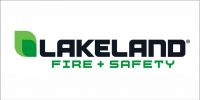 Flooding remains one of the most persistent and destructive forms of natural disaster, especially when compounded by extended durations and inadequate drainage infrastructure. In long-term flooded areas—whether caused by river overflow, monsoonal saturation, glacial melt, dam breaches, or climate-induced sea-level rise—the complexities of rescue and relief operations multiply significantly. The challenge extends beyond immediate evacuation and transitions into long-term humanitarian, environmental, and infrastructural crises. From industrial estates submerged under meters of water to urban peripheries marooned due to stagnant drainage systems, the need for robust, scalable, and adaptable rescue strategies becomes paramount. For public safety authorities, urban planners, environmental engineers, and B2B solution providers in emergency management and civil infrastructure, the effectiveness of rescue strategies must be viewed through a dual lens: short-term life preservation and long-term ecosystem recovery, with a central emphasis on drainage processing as a critical enabler or bottleneck in operational success.
Flooding remains one of the most persistent and destructive forms of natural disaster, especially when compounded by extended durations and inadequate drainage infrastructure. In long-term flooded areas—whether caused by river overflow, monsoonal saturation, glacial melt, dam breaches, or climate-induced sea-level rise—the complexities of rescue and relief operations multiply significantly. The challenge extends beyond immediate evacuation and transitions into long-term humanitarian, environmental, and infrastructural crises. From industrial estates submerged under meters of water to urban peripheries marooned due to stagnant drainage systems, the need for robust, scalable, and adaptable rescue strategies becomes paramount. For public safety authorities, urban planners, environmental engineers, and B2B solution providers in emergency management and civil infrastructure, the effectiveness of rescue strategies must be viewed through a dual lens: short-term life preservation and long-term ecosystem recovery, with a central emphasis on drainage processing as a critical enabler or bottleneck in operational success.
Traditional rescue models often focus heavily on swift water rescues, boat evacuations, and temporary shelter provisioning. While these are vital in the first phase of response, their efficacy in sustained inundation conditions is severely tested. For example, rescue boats lose access as water becomes stagnant and vegetation grows; shelters become overcrowded as return is delayed; and supplies dwindle when roads remain impassable due to submerged culverts and blocked canals. In such conditions, the foundation of strategic response pivots from reactionary mobilization to adaptive management—leveraging geospatial intelligence, modular resource distribution, and drainage remediation efforts to ensure continuity. Satellite imaging and drone surveys play a key role in mapping water persistence zones and structural damages, allowing for real-time adaptation of rescue grids. These data sets can be fed into cloud-based incident management systems that coordinate inter-agency efforts with a common operating picture, optimizing where personnel and assets are dispatched.
A notable example of long-term flooding management can be drawn from Southeast Asia, particularly the delta regions of Bangladesh and Vietnam, where cyclical flooding is compounded by insufficient drainage and rising sea levels. In these scenarios, amphibious rescue platforms, floating health clinics, and vertical evacuation shelters built above historical flood lines have shown considerable success.
These infrastructures not only serve immediate life-saving functions but also support medium-term continuity, such as delivering vaccinations, conducting sanitation monitoring, and providing psychological first aid. The effectiveness of these strategies hinges on their ability to integrate with local drainage engineering initiatives—such as channel dredging, culvert restoration, and the installation of portable pump stations—which prevent floodwaters from becoming long-term hazards due to stagnation and biohazard build-up.
Another crucial element in these scenarios is the deployment of mobile drainage solutions in tandem with rescue operations. Mobile submersible pumps, temporary levees, inflatable water diversion barriers, and emergency retention basins can expedite the recession of floodwaters in high-value or densely populated zones. Their strategic placement must be guided by hydrodynamic modeling, taking into account water flow direction, elevation contours, stormwater backflow, and sediment transport.
Additionally, community-based rescue mechanisms, embedded within larger strategic frameworks, play a critical role in long-term flood situations. Localized volunteer networks equipped with watercraft, first-aid kits, radios, and drainage clearing tools (such as de-cloggers and portable excavation units) can act as first responders even before external aid arrives. Empowering these networks through training, communication tools, and integration into official response grids significantly enhances response coverage and cultural compatibility.
In conclusion, rescue strategies in long-term flooded areas must move beyond singular events and be designed as adaptive, data-driven ecosystems. The centrality of drainage processing in this ecosystem cannot be overstated—whether it is through temporary hydraulic engineering, mobile pumps, community-based water management, or AI-integrated drainage monitoring. Effectiveness must be judged not only by life saved during the peak of disaster but by how rapidly and equitably normalcy is restored. For government bodies, industrial stakeholders, rescue service providers, and infrastructure designers, the future lies in interoperable systems that merge physical rescue with environmental restoration, supported by predictive drainage intelligence and participatory planning.























































